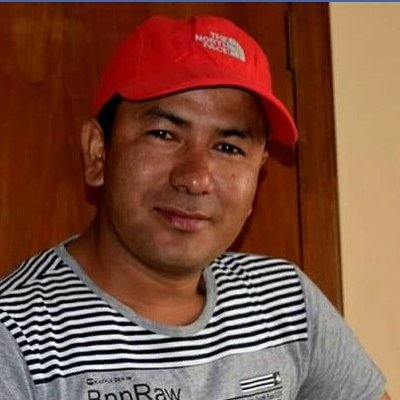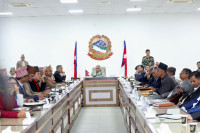National
Yarsagumba pickers travel to highlands with no guarantee of safe return
Over 200 people have perished on their way to pick yarsa across the country in the last decade, according to locals.
Basant Pratap Singh & DB Budha
On her way back from Dhanseri Himal highland where she had gone to collect Yarsagumba, Ruwasi Bohara, a local of Bichhada in Surma Rural Municipality-1 in Bajhang, met her neighbour Sinki Bohara at Parthi highland on May 31. Sinki was on her way to Byasimare highland to pick Yarsagumba.
The two neighbours had a brief conversation before both of them headed toward their respective destinations. “We were already getting late and the trail is difficult and risky to walk through at nightfall. We had to reach our destinations before sunset,” said Ruwasi. Before going her way, Sinki bid her neighbour farewell and told her, “Go carefully. We will meet later if we survive.”
On the third day of their meeting, on June 2, Sinki, aged 35, went missing in an avalanche, which swept her tent away. Her whereabouts are still unknown, say police.
“I still remember the last time I spoke to her,” said Ruwasi. “I had never seen her uncertain about life before.”
Sinki’s demise is not an isolated case. Surma Rural Municipality reports the death of yarsa pickers every year. According to locals, as many as 75 people from Surma died in the course of collecting the precious fungus in the past 14 years. Some died in avalanches and others from falling off cliffs, altitude sickness or being swept away while crossing streams.
More than 200 people from Saipal, Talkot, Masta, Chhabispathibhera and Durgathali rural municipalities and Jayaprithvi and Bungal municipalities died while collecting yarsagumba in the past 10 years, locals say. However, the government authorities and the local units do not have official records of such deaths.
For Prem Bohara, Sinki’s husband, it was the second tragedy in two years. His 13-year-old daughter died last year when she was swept away by the Agad stream while on her way home after picking Yarsagumba.
“For us, Yarsagumba is the main income source to raise a family,” Ruwasi said. “There are no other alternatives to risking our lives in the highlands.”
_0906682ka.jpg)
The villagers know very well that it is quite risky to collect the fungus, said Dilip Bohara of Surma, “but we can do nothing else to make a living.”
“We are compelled to risk our lives to collect Yarsagumba,” Bohara added.
The yarsa pickers of several districts of Karnali, Bagmati and Gandaki provinces also share a similar ordeal.
Two people lost their lives in the highlands in Gorkha last year; they were both from Chumcheta, Chumnubri Rural Municipality-6.
In Lamjung, Mankaji Gurung of Tangting, in Madi Rural Municipality-2, Kaski, who reached the mountains in search of Yarsa, died on May 13, 2014.
Sunkali Bohara of Patarasi Rural Municipality-2 in Jumla says her husband Buddhi, aged 25 then, went to the highlands a few years ago to earn money with yarsa sale to repay a loan they had taken from the neighbours to replace the mud roof of their house with corrugated zinc sheet.
He never returned.
Buddhi suffered from stomach ache and respiratory problems while in the highlands. When he fell sick, he was in the remote highland from where it takes around three days to reach Gamgadhi, the district headquarters of Jumla. He died while being taken to the hospital.

Til Bahadur Sarki, aged 26, of Patarasi was a bachelor’s student and wanted to join government service, so he went to the highlands to collect money to join tuition for the Public Service Commission’s exam. Til Bahadur died at Nayaban highland of Mugu district last year.
According to Karnali Province Police Office, as many as 13 people died in various highlands of Dolpa in the fiscal year 2018-19. Such incidents were not reported in the fiscal year of 2020-21 and 2021-22 as the government imposed a ban on collecting yarsagumba due to the Covid pandemic.
When the locals leave the villages to go to the highlands every year, they receive a grand farewell from those left behind because like Til Bahadur, the yarsa pickers may not return.
The risks yarsa pickers face in the highlands come in many forms—from running out of food to suffering from altitude sickness, says Tara Bahadur Bohora, a local. “The families left behind spend days and nights waiting for their loved ones to return. But there is no guarantee of a safe return,” said Tara.

According to the Forest Department, a total of 1,179 kg of Yarsa was collected in Darchula, Dolpa, Jumla, Mugu, Bajhang, Rukum, Myagdi, Manang, Gorkha, Sindhupalchok, Sankhuwasabha and Rasuwa in the fiscal year 2011-12. Around 2,459.2 kg was collected in fiscal year 2012-13.
Last year, 265 kg was collected in Bajhang and 107 kg in Jumla alone. Bajhang is one of the districts with the largest yarsa collection during the picking season. According to the Division forest Office, 250 kg of yarsa is exported from Bajhang annually on an average.
According to a study by Nepal Rastra Bank, Yarsa Gumba worth Rs. 4.92 billion was collected in 11 districts of Nepal in the fiscal year 2012-13. Although records of sale, distribution and transaction amount of yarsa have been found in various agencies, there is no documentation of those who have lost their lives during the yearly sojourn to the highlands.
Every year, more than 26000 yarsa pickers from Dolpa go to the highlands, of which 10,000 are youths from Jumla. Around 35,000 pickers from across the country go to the highlands in Bajhang yearly.
Yarsa grows in the highlands at an altitude of 3,540 to 5,500 metres above sea level. The number of pickers heading to these highlands is growing every year.
(Hariram Uprety in Gorkha, Aash Gurung in Lamjung and Ghanshyam Khadka in Myagdi contributed reporting.)




 11.12°C Kathmandu
11.12°C Kathmandu






.jpg&w=200&height=120)









